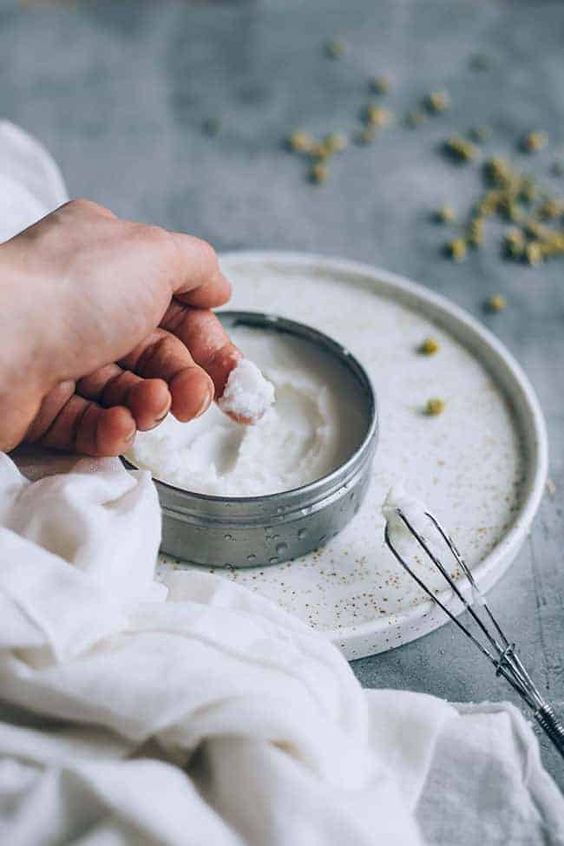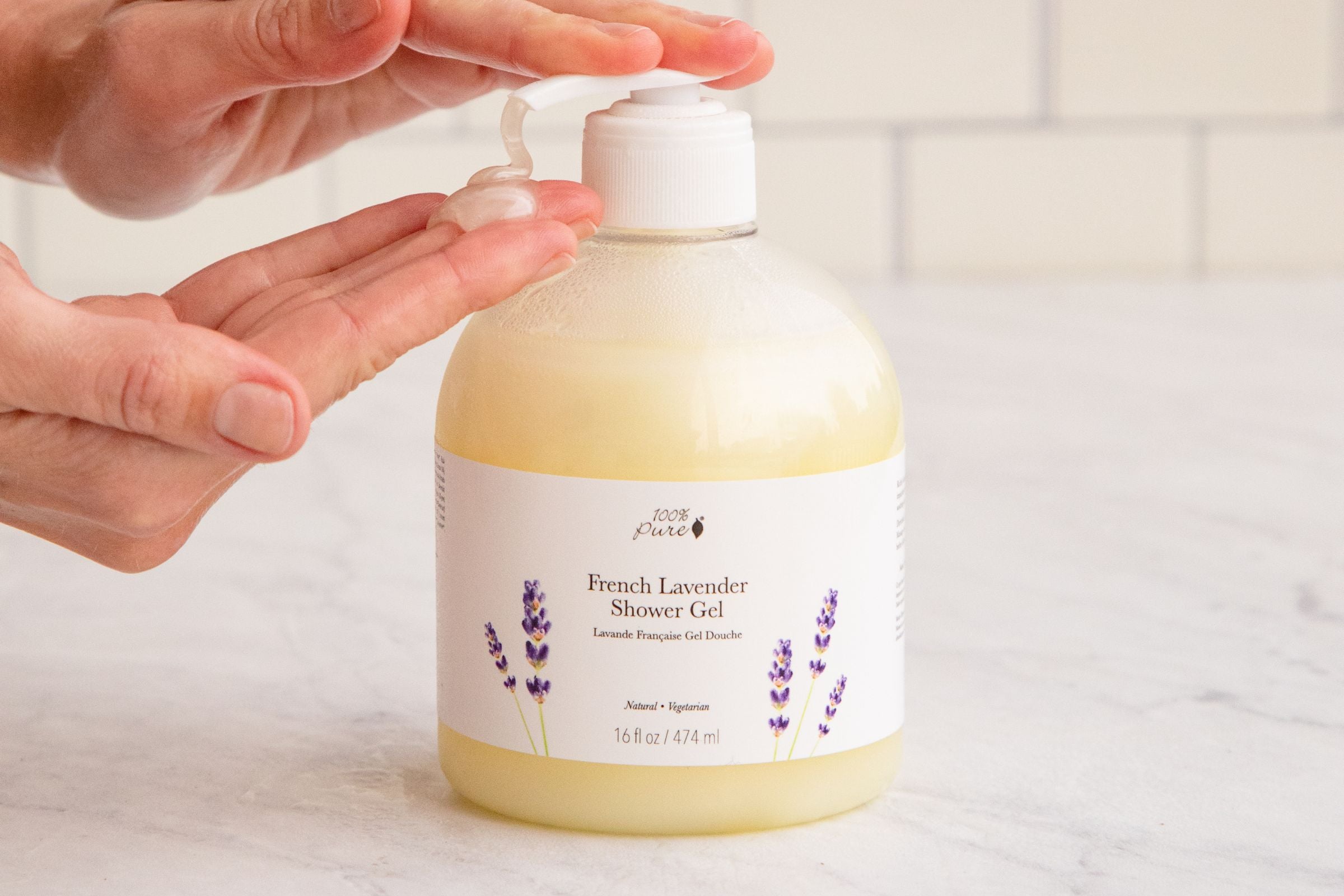This DIY whipped body butter is perfect for winter, especially if you have dry skin. Cold weather and hot showers can leave skin feeling dehydrated, so this nourishing body butter is a great solution.
Made with simple, natural ingredients like shea butter, cocoa butter, and coconut oil, this recipe is safe enough to eat, ensuring you know exactly what you’re putting on your skin. Essential oils can be added for fragrance and their beneficial properties.
The result is a light, fluffy body butter that feels like a cloud and provides deep hydration. Learn how to make this easy, homemade skincare treat!

WHAT IS BODY BUTTER?
If you’ve never tried body butter before, you’re in for a treat! It’s like butter for your skin—rich, moisturizing, and easy to make at home. By simply melting and whipping your favorite oils, you can create a luxurious body butter.
While coconut oil is a popular choice, it can sometimes feel greasy or melt at room temperature. For a better balance, try experimenting with different plant-based butters to create a nourishing, non-greasy moisturizer.
This homemade body butter not only feels smooth and nourishing on the skin, but it also smells amazing—especially if you add essential oils. It’s perfect for sensitive skin and makes a thoughtful, personalized gift!
STEP BY STEP GUIDE TO MAKE WHIPPED BODY BUTTER
INGREDIENTS FOR WHIPPED BODY BUTTER
- 1/3 Cup Coconut Oil: Organic coconut oil is a skincare powerhouse! Its low molecular weight allows it to deeply penetrate the skin, delivering moisture and nourishment by binding to proteins in the skin.
- 1/3 Cup Shea Butter: Shea butter is an incredibly effective emollient, making it perfect for hydrating and softening dry skin. Its rich, moisturizing properties are a key component in body butter recipes.
- 1/3 Cup Cocoa Butter Wafers: Cocoa butter lends a creamy, thick texture to lotions and body butters, softening at body temperature for easy absorption. It also contains natural antioxidants like vitamin E, as well as other beneficial vitamins and minerals.
- 1/3 Cup Jojoba Oil: A non-comedogenic carrier oil, jojoba oil is soothing and deeply moisturizing, making it ideal for calming irritated skin. If jojoba oil isn’t available, sweet almond oil is a great alternative due to its quick absorption and nourishing fatty acids and vitamins A and E.
- 2 Teaspoons Arrowroot Powder: To reduce the oily feel of this rich moisturizer, arrowroot powder helps create a smoother, less greasy finish. If you don’t have arrowroot powder, cornstarch or tapioca starch can be used as substitutes.
- Essential Oils (Optional): Add a few drops of essential oils for a natural fragrance and extra skin benefits. Essential oils are preferred over synthetic fragrances due to their plant-based origins and numerous healing properties.
WHY THESE INGREDIENTS
- Coconut Oil – Provides deep moisture, promotes wound healing, and has antibacterial, antifungal, and antiviral properties.
- Jojoba Oil – Moisturizes, supports wound healing, reduces inflammation, and offers anti-aging benefits.
- Cocoa Butter – Forms a protective barrier to lock in moisture and protect the skin.
- Shea Butter – Rich in antioxidants, it deeply hydrates and promotes skin healing.
- Essential Oils – Add a pleasant scent and offer various beneficial properties depending on the oil used.
DIRECTIONS FOR MAKING YOUR WHIPPED BODY BUTTER
- Begin by melting the coconut oil, cocoa butter, and shea butter together in a double boiler or a saucepan over low heat. If you don’t have a double boiler, a large glass measuring cup will work just fine.
- Once the butters are melted, remove from heat and stir in the jojoba oil. If you’re using essential oils, add them now and mix well to evenly distribute the scent.
- Pour the mixture into a medium-sized glass bowl and place it in the refrigerator to cool for about two hours. You can also chill the oils in the fridge to speed up the process.
- When the mixture has fully solidified, remove it from the refrigerator and transfer it to a stand mixer (or use a hand mixer). Whip the mixture until it becomes light and fluffy.
- Once whipped, add the arrowroot powder and whip again until the body butter reaches a smooth, airy consistency.
- Finally, scoop the whipped body butter into containers and store in a cool, dry place.
TIPS FOR MAKING DIY BODY BUTTER
This whipped body butter makes a wonderful gift for friends and family, and you can easily double or triple the recipe for larger batches.
However, be cautious when using citrus essential oils, such as lemon or orange, as they can increase sun sensitivity. If you choose to include them, avoid sun exposure for a while after application, or opt to use the body butter at night for extra safety.
HOW TO STORE HOMEMADE WHIPPED BODY BUTTER
Because the oils and butters in this body butter are natural and prone to melting in warm conditions, it’s best to store it in a cool, dry place. If the butter does melt, you can refrigerate it and re-whip it to restore its texture.
Stored in an airtight jar in a cool, dark environment, this body butter will last up to six months. For longer storage, you can add preservatives. Although I haven’t added preservatives to this recipe, Geogard ECT (also known as Preservative ECO or Plantaserv M) would be a good choice. Use between 0.6% and 1% of the mixture.
If you prefer natural preservatives, vitamin E oil or rosemary extract are great options. These help extend the shelf life without introducing harsh chemicals.
Another way to prolong freshness is by storing the body butter in smaller containers. This limits exposure to air and contaminants each time you open it, ensuring it stays fresh for longer.
Be sure to keep the body butter away from direct sunlight and high temperatures, as these can cause the natural ingredients to break down more quickly and spoil.
If you like experimenting with different scents or textures, you can customize this recipe by adding essential oils or botanical extracts. Lavender, chamomile, or rosemary essential oils are popular for their soothing properties, while citrus oils like lemon or orange can provide a refreshing scent. Just remember, citrus oils can make skin sensitive to sunlight, so it’s best to use them at night.
For added hydration and soothing benefits, consider mixing in a tablespoon of aloe vera gel, especially helpful for sun-exposed or irritated skin.
Lastly, if you prefer a firmer body butter, adjust the ratio of butters to oils. Increasing the amount of cocoa butter or shea butter will create a firmer consistency, while adding more liquid oils will make the body butter softer and easier to spread.
CONCLUSION
Whipped body butter is a luxurious and nourishing treat for your skin. By following the simple steps outlined in this guide, you can easily create your own customized version at home. With the flexibility to choose your preferred ingredients and scents, you can tailor your body butter to your specific needs and preferences. Enjoy the satisfaction of crafting a homemade product that will leave your skin feeling soft, smooth, and beautifully hydrated.




